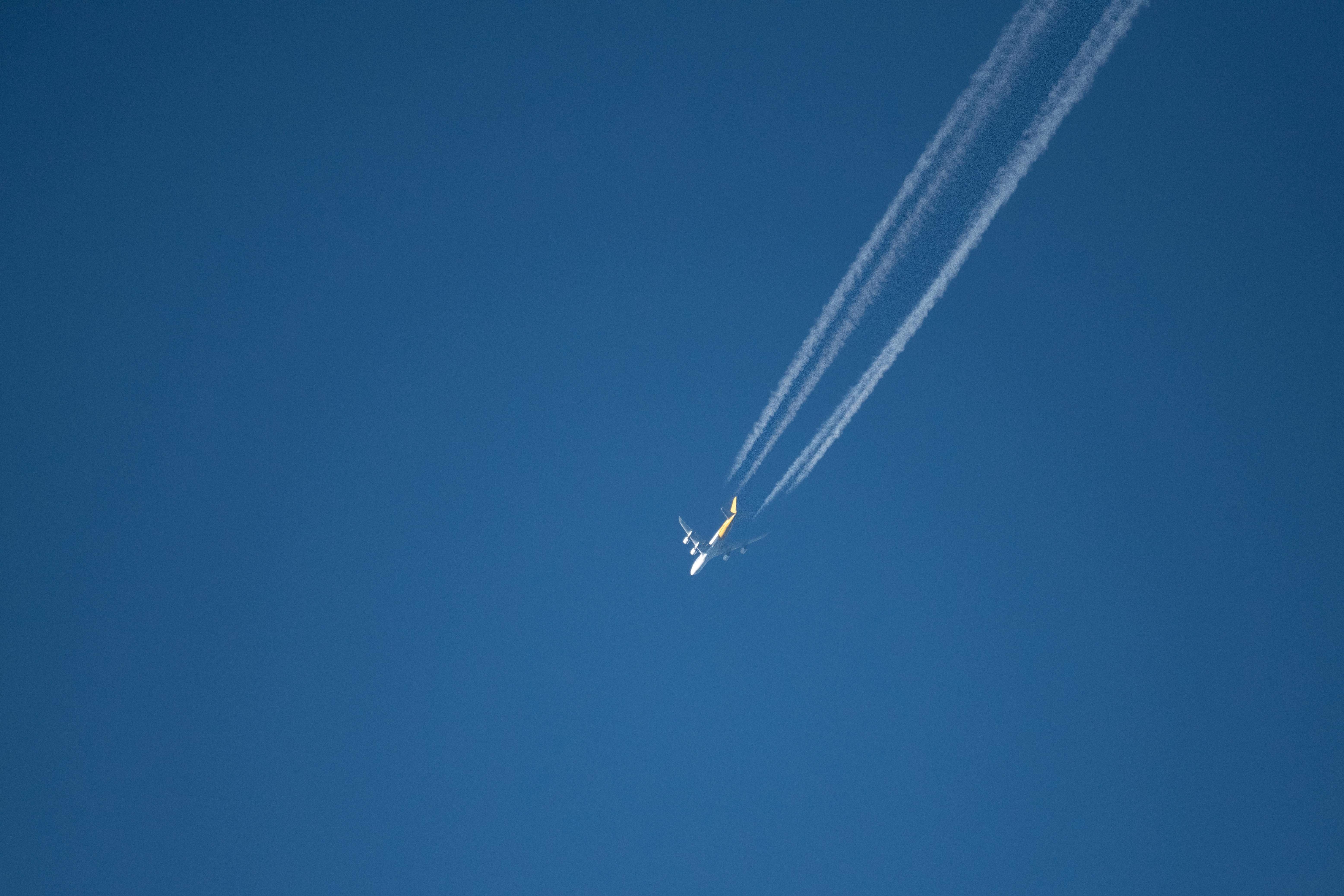Are you ready to take your RC flying skills to the next level? Whether you’re new to the world of remote-controlled aircraft or a seasoned enthusiast, choosing the right size for an RC helicopter or quadcopter is crucial. With so many options available, it can be overwhelming to figure out which size will best suit your needs. Don’t fret, because in this article, we will guide you through the process of selecting the perfect size for your RC helicopter or quadcopter. From factors to consider to tips for finding the right fit, you’ll be well-equipped to make an informed decision and soar through the skies with confidence.

Factors to Consider
When choosing the right RC helicopter or quadcopter, there are several factors you should consider to ensure you make the best decision for your needs and preferences. These factors include budget, experience level, intended use, whether you’ll be flying indoors or outdoors, size and portability, assembly and maintenance requirements, flight characteristics, and power source. By carefully evaluating each of these factors, you can find the perfect RC aircraft that suits your needs and provides an enjoyable flying experience.
Budget
Setting a budget is an important first step in choosing an RC helicopter or quadcopter. RC aircraft can vary significantly in price, ranging from affordable options for beginners to high-end models for advanced enthusiasts. Before you begin your search, determine how much you are willing to spend on your RC aircraft. By setting a budget, you can narrow down your options and focus on models within your price range.
Evaluating affordability is crucial when considering your options. While you may have a set budget in mind, it’s important to factor in other potential expenses, such as spare parts, batteries, and accessories. Additionally, consider the long-term costs associated with your chosen aircraft, including maintenance, repairs, and upgrades. By considering affordability and long-term costs, you can ensure that your chosen RC aircraft is a sustainable investment.

Experience Level
Your experience level plays a significant role in determining the type of RC helicopter or quadcopter that is suitable for you. RC aircraft are available in varying levels of complexity, from beginner-friendly options to advanced models with advanced features. It is crucial to choose an aircraft that matches your skill level to ensure a smooth and enjoyable flying experience.
If you are a beginner, it is advisable to start with a simple and easy-to-fly RC helicopter or quadcopter. These models typically offer stability and user-friendly controls, allowing you to learn the basics of flying without becoming overwhelmed. As you gain experience and confidence, you can gradually progress to more intermediate and advanced aircraft with enhanced maneuverability and additional features.
Intended Use
Consider your intended use for the RC helicopter or quadcopter. Different models are designed to excel in specific areas, such as recreational flying, aerial photography and videography, racing, or FPV (First Person View) flying. Understanding your intended use will help you select an aircraft specifically tailored to meet your needs and provide optimal performance in your chosen activity.
If you are primarily interested in recreational flying, a versatile and easy-to-fly RC helicopter or quadcopter would be an excellent choice. These models often prioritize stability and user-friendly controls, allowing you to enjoy leisurely flights and practice basic maneuvers.
On the other hand, if aerial photography and videography are your passions, you’ll want to consider an RC aircraft with a built-in camera or the capability to mount a camera. Look for models with stable flight characteristics and advanced stabilization systems to ensure smooth footage capture. Additionally, pay attention to the camera’s resolution, gimbal features, and whether it supports live video streaming.
For those interested in racing, agility and speed are key factors to consider. Look for RC helicopters or quadcopters specifically designed for racing, as they often feature aerodynamic designs, powerful motors, and responsive controls to deliver quick and exhilarating flights.
FPV flying, which involves piloting the aircraft from a first-person perspective through a live video feed, is becoming increasingly popular. If this is your intended use, look for an RC helicopter or quadcopter with FPV capabilities, such as a camera and FPV goggles or a monitor. Consider the quality of the video transmission and the range of the FPV system when selecting your aircraft.

Indoor vs. Outdoor
Consider where you will be primarily flying your RC helicopter or quadcopter – indoors or outdoors. Each environment has its own considerations and requirements, and choosing the right aircraft for your intended flying location is crucial for an optimal experience.
If you plan to fly mainly indoors, opt for a smaller-sized RC helicopter or quadcopter. Micro/Nano or Mini-sized aircraft are ideal for indoor flying due to their compact size and maneuverability. These models are often designed to be lightweight and equipped with propeller guards to protect against collisions with walls and furniture. Additionally, they typically have a lower flight range to accommodate smaller indoor spaces.
On the other hand, if you prefer outdoor flying, the size of the RC aircraft becomes more flexible. Mid-size, large, or even giant-sized helicopters or quadcopters can provide a thrilling outdoor flying experience. Outdoor models generally have more powerful motors, increased flight range, and greater stability in varying weather conditions. However, it’s important to ensure that you have ample space to safely operate larger RC aircraft.
Size and Portability
The size and portability of an RC helicopter or quadcopter are important considerations, as they directly impact your convenience and ease of transport. Different sizes are suitable for different flying environments and user preferences.
Micro/Nano-sized RC aircraft are incredibly compact and lightweight, making them highly portable and convenient to carry around. These tiny aircraft can easily fit in a backpack or even in your pocket, allowing you to take them anywhere. However, keep in mind that their flight capabilities and features might be limited due to their small size.
Mini-sized aircraft are slightly larger than micro/nano models but still offer good portability. They strike a balance between size and functionality, providing a wider range of flight capabilities while remaining relatively easy to transport. Mini-sized aircraft are often popular choices for both indoor and outdoor flying due to their versatility.
Mid-size and large RC helicopters or quadcopters offer increased flight capabilities and performance but sacrifice some portability. These models are usually designed with robust frames, accommodating more advanced features and more powerful motors. They can handle outdoor flights, perform aerobatic maneuvers, and carry additional payloads such as cameras or other accessories. However, their larger size makes them less convenient to transport.
For those seeking the ultimate in size and performance, giant-sized RC aircraft are available. These models offer exceptional flight capabilities, long flight times, and the ability to carry heavy payloads. However, due to their substantial size, they require dedicated storage and transportation arrangements, and outdoor flying is typically more suitable for these massive machines.
Assembly and Maintenance
Consider the assembly and maintenance requirements of the RC helicopter or quadcopter you are considering. RC aircraft come in various assembly levels, ranging from ready-to-fly (RTF) to build-from-scratch options. Understanding your preference and skill level will help you choose an aircraft that offers the right balance between convenience and customization.
Ready-to-fly (RTF) models come fully assembled and ready to take to the skies. These models are perfect for beginners or those who want a hassle-free flying experience without the need for technical setup or customization. Simply charge the batteries, bind the transmitter, and you’re ready to fly.
If you want more control over your aircraft’s components and features, a bind-n-fly (BNF) model might be the right choice. BNF models come pre-assembled but require you to use your own transmitter. This allows for customization and flexibility but requires you to have prior experience in binding the transmitter and setting up the aircraft.
For enthusiasts who enjoy building and customizing their aircraft, almost ready-to-fly (ARF) or build-from-scratch options are available. ARF kits typically come partially assembled, requiring you to complete the remaining assembly steps and add your chosen electronics. Build-from-scratch models offer the most customization options but require advanced technical skills and knowledge to ensure proper construction and setup.
Maintenance requirements should also be considered, especially if you prefer an aircraft that is easy to maintain or if you enjoy working on your RC aircraft. Some models may require frequent maintenance, such as replacing worn-out parts or conducting routine inspections. Others may feature modular designs that allow for easy repairs or replacements. Understanding the maintenance needs of your chosen aircraft can help you ensure that it remains in optimal condition and prolong its lifespan.
Flight Characteristics
Flight characteristics are essential considerations when choosing an RC helicopter or quadcopter, as they determine how the aircraft performs and handles during flight. Different models are designed to prioritize stability, agility, speed, payload capacity, flight time, or control distance. Evaluating your preferences for these characteristics will help you find an RC aircraft that suits your flying style.
Stability is crucial for beginners or those who prefer smooth and steady flights. Look for models with built-in stabilization features, such as gyroscopes or flight controllers, to ensure stable flight performance. These aircraft are often equipped with self-leveling mechanisms and automatically adjust to maintain a steady hover and balance.
Agility is more important for those seeking a more dynamic and acrobatic flying experience. Models with enhanced agility offer quick and responsive controls, allowing for precise maneuvers and aerial stunts. These aircraft typically have higher thrust-to-weight ratios, advanced flight controllers, and aerodynamically designed frames.
Speed is another factor to consider, especially for racing enthusiasts or those interested in fast-paced flights. Look for RC helicopters or quadcopters with powerful motors and streamlined designs, as these characteristics contribute to high-speed capabilities. Additionally, models with adjustable speed settings or multiple flight modes allow you to gradually increase your speed as you gain confidence and experience.
Payload capacity is particularly important if you plan to mount cameras or other accessories on your RC aircraft. Check the aircraft’s specifications to ensure it can carry the weight of your desired payload without sacrificing flight performance or stability. Keep in mind that increased payload capacity may affect flight time and maneuverability.
Flight time refers to the duration an RC helicopter or quadcopter can remain airborne on a single battery charge. Consider the flight time specifications of different models, as longer flight times allow for increased enjoyment and extended aerial photography or videography sessions. However, remember that flight time can vary depending on factors such as payload and flight style.
Control distance denotes the maximum range between the aircraft and the transmitter for stable communication. Evaluate the control distance specifications of various RC aircraft to ensure that they meet your requirements. Keep in mind that outdoor flying typically allows for greater control distances than indoor flying.
Power Source
The power source of an RC helicopter or quadcopter is an essential consideration that determines how the aircraft is fueled during flight. The two main power sources for RC aircraft are electric and nitro/gasoline engines. Each option has its own benefits and considerations, and choosing the right power source depends on your preferences and needs.
Electric-powered RC helicopters and quadcopters are the most common and user-friendly option. These aircraft typically run on rechargeable lithium polymer (LiPo) batteries, offering convenience and ease of use. Electric models are generally quieter, more environmentally friendly, and require minimal maintenance compared to nitro/gasoline-powered models. They are ideal for beginners and recreational flying due to their simplicity and accessibility.
On the other hand, nitro/gasoline-powered RC aircraft are known for their power, realism, and sound. These models use internal combustion engines that require a fuel mixture of nitromethane, methanol, and oil. Nitro/gasoline models often offer longer flight times, increased speed, and more weight-carrying capacity. However, they require specialized knowledge, tuning, and maintenance to ensure proper operation. Nitro/gasoline-powered aircraft are more popular among experienced enthusiasts and those interested in competition or scale modeling.
Conclusion
Choosing the right RC helicopter or quadcopter involves evaluating a variety of factors to ensure that you select an aircraft that suits your needs and preferences. By considering your budget, experience level, intended use, flying environment, size and portability requirements, assembly and maintenance preferences, flight characteristics, and power source, you can make an informed decision.
Evaluate your personal preferences and prioritize the factors that matter most to you. Consider factors such as affordability, long-term costs, and the level of customization you desire. Balancing these factors will help you find the perfect RC aircraft that provides an enjoyable flying experience while meeting your expectations.
Remember to consider safety precautions, abide by local regulations, and continuously educate yourself on flying techniques and best practices. With the right RC helicopter or quadcopter, you can embark on an exciting journey and explore the boundless possibilities of remote-controlled flight. Happy flying!


